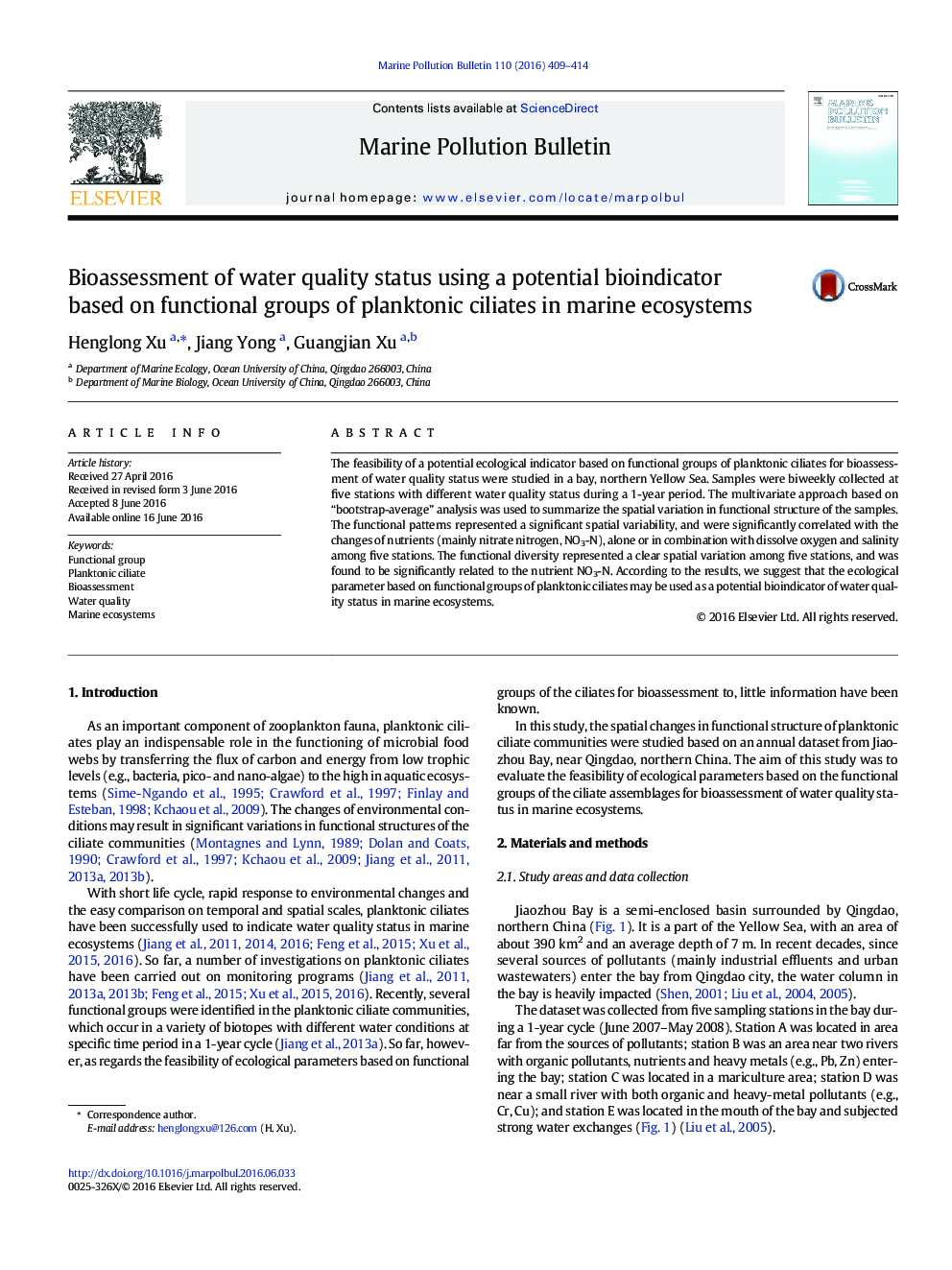| Article ID | Journal | Published Year | Pages | File Type |
|---|---|---|---|---|
| 6355711 | Marine Pollution Bulletin | 2016 | 6 Pages |
Abstract
The feasibility of a potential ecological indicator based on functional groups of planktonic ciliates for bioassessment of water quality status were studied in a bay, northern Yellow Sea. Samples were biweekly collected at five stations with different water quality status during a 1-year period. The multivariate approach based on “bootstrap-average” analysis was used to summarize the spatial variation in functional structure of the samples. The functional patterns represented a significant spatial variability, and were significantly correlated with the changes of nutrients (mainly nitrate nitrogen, NO3-N), alone or in combination with dissolve oxygen and salinity among five stations. The functional diversity represented a clear spatial variation among five stations, and was found to be significantly related to the nutrient NO3-N. According to the results, we suggest that the ecological parameter based on functional groups of planktonic ciliates may be used as a potential bioindicator of water quality status in marine ecosystems.
Related Topics
Physical Sciences and Engineering
Earth and Planetary Sciences
Oceanography
Authors
Henglong Xu, Jiang Yong, Guangjian Xu,
